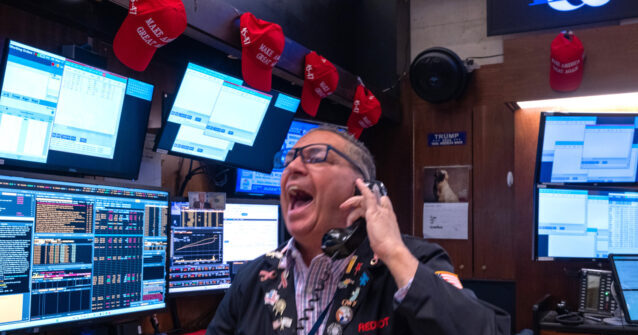The stock market experienced a significant downturn on Wednesday, primarily following the Federal Reserve’s decision to cut interest rates by a quarter of a point. Despite this reduction, Fed officials communicated their anticipation of fewer cuts in the future alongside a forecast of persisting inflation. This announcement led to substantial declines across the major stock indexes, with the Dow Jones Industrial Average plummeting over 500 points, translating to a 1.2 percent drop. The Nasdaq Composite fell by 2 percent, and the S&P 500 decreased by 1.5 percent. Notably, the Russell 2000 index, which tracks smaller companies, saw a staggering decline of more than 2.6 percent, reflecting widespread investor concern regarding the Fed’s updated economic outlook.
The Federal Open Market Committee (FOMC) released projections indicating a significant adjustment in the expected rate of interest cuts. The median forecast now anticipates only two cuts for the next year, a stark reduction from the previously projected four cuts announced in September. Following this revision, the Federal Reserve now expects the Federal Funds rate to stand at 3.9 percent by the end of next year, which is a notable increase of half a point from earlier forecasts. This shift in the Fed’s stance may signal a more cautious approach to further monetary easing as inflationary pressures persist.
In addition to revisions for the upcoming year, the Fed has also adjusted its longer-term projections for interest rates. By the end of 2027, the new forecast for the benchmark rate is now pegged at 3.4 percent, which is a year later than earlier predictions. Previously, the Fed estimated that this rate would reach 2.9 percent by that timeframe. This change illustrates a growing recognition among Fed officials that economic conditions may require higher interest rates for a longer duration than earlier anticipated.
The Fed’s longer-run forecast has also been revised upward for the first time in years. The long-term rate has been adjusted from 2.9 percent to 3.0 percent. There has been a consistent trend of upward revisions in the Fed’s projections since they historically forecasted a longer-run tendency of approximately 2.5 percent. This evolving outlook underscores the Fed’s growing concern about sustained inflation and its potential impact on the economy over the coming years.
Adding to these developments is the Fed’s updated perspective on inflation itself. The central bank now projects that inflation will remain elevated for an extended period. The median forecast for inflation by the end of the next year has been revised up to 2.5 percent, compared to an earlier estimate of 2.1 percent made in September. Intriguingly, this revised outlook suggests that the Fed believes inflation could exceed current levels, indicating that the central bank anticipates challenges ahead in controlling inflationary trends.
In summary, the combined effects of the Federal Reserve’s monetary policy decisions and updated projections have instilled a sense of uncertainty within the stock market. The significant drops across major indexes illustrate the investor response to the Fed’s cautious outlook, which suggests a prolonged period of elevated interest rates and inflation. As market participants digest these signals, the implications for economic growth and inflation management remain critical areas of focus moving forward.

